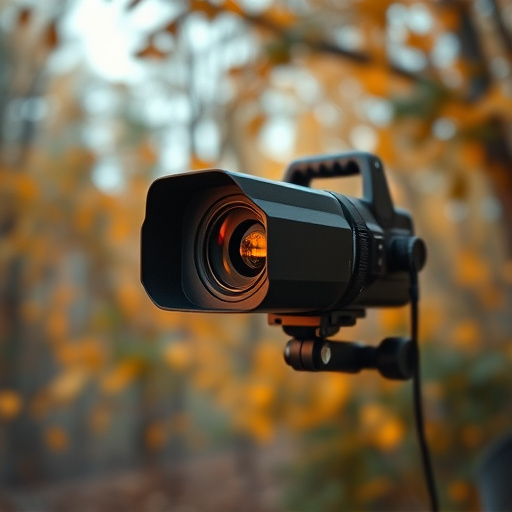In today's digital age, small hidden cameras in nurseries raise significant privacy concerns. Caregivers can protect children and staff by understanding camera capabilities and common placements, using techniques like light reflection to detect them, and implementing non-intrusive solutions. Despite advancements in spy camera detection technology, demand for effective methods remains high. Researchers are exploring alternative approaches, including advanced image processing algorithms and AI-driven computer vision systems, to bridge gaps in detecting small hidden cameras in sensitive areas like nurseries.
Uncovering hidden threats is a paramount concern, especially in sensitive spaces like nurseries. This article explores an innovative approach to detect small hidden cameras using light reflection techniques. We delve into the science behind this method, its proven effectiveness against these minute devices, and examine alternative solutions shaping the future of security. Understanding the subtle art of light interaction offers a powerful tool to safeguard nursery environments, ensuring trust and peace of mind.
- Understanding Small Hidden Cameras in Nurseries
- The Science Behind Light Reflection Technique
- Implementation and Effectiveness of the Method
- Alternative Solutions and Future Prospects
Understanding Small Hidden Cameras in Nurseries
In today’s digital age, small hidden cameras have become increasingly sophisticated and ubiquitous, finding their way into even the most intimate spaces like nurseries. These tiny devices, often no larger than a button or a coin, can be easily concealed within everyday objects, making them nearly undetectable. Parents and caregivers must be vigilant in recognizing these modern forms of surveillance, as they can invade privacy and create an uncomfortable atmosphere for both children and staff.
The presence of small hidden cameras in nurseries raises significant concerns about data security and the potential misuse of sensitive information. These cameras may capture intimate moments, conversations, or activities that should remain private. By understanding the capabilities and common placements of these devices, caregivers can employ effective countermeasures to protect the safety and well-being of children under their watch.
The Science Behind Light Reflection Technique
The Science Behind Light Reflection Technique
In the quest to uncover small hidden cameras in nurseries or any sensitive spaces, light reflection techniques have emerged as a powerful tool. This method leverages the principles of light interaction with surfaces to detect even the smallest and most discreetly placed devices. By projecting a specific light pattern onto potential hiding spots, such as corners, crevices, and behind furniture, reflective behavior from objects or devices is observed. Any deviation from expected reflection can indicate the presence of an irregular surface, potentially masking a small hidden camera.
This technique draws on the fact that light waves interact with different materials in unique ways, leading to variations in reflected light patterns. By analyzing these reflections, experts can identify irregularities that might suggest the location of small hidden cameras, including those used in nursery monitoring or other covert surveillance scenarios. The accuracy and effectiveness of this method lie in its ability to non-invasively examine areas where traditional searches might struggle to reach.
Implementation and Effectiveness of the Method
The implementation of light reflection techniques to detect small hidden cameras in nurseries is a discreet and effective approach. This method involves strategically placing lights in key areas, such as corners or behind furniture, to create reflections that can reveal camera lenses. When a tiny hidden camera is present, its lens will reflect light back, making it visible to the observer.
The effectiveness of this technique lies in its ability to capitalize on the natural light available and the reflective properties of camera lenses. By angling lights precisely, even low-quality cameras can be detected. This simple yet ingenious method offers a non-intrusive way to ensure privacy and security in nurseries, providing parents with peace of mind that no small hidden cameras are present.
Alternative Solutions and Future Prospects
Despite advancements in spy camera detection techniques, the market demand for innovative solutions persists, especially in sensitive areas like nurseries where privacy and security are paramount. While light reflection methods have shown promise, they face challenges in detecting small hidden cameras due to their miniature size and advanced technology. To address this gap, researchers and developers are exploring alternative approaches.
One promising avenue involves utilizing advanced image processing algorithms that can analyze subtle visual anomalies caused by camera lenses. Additionally, integrating AI-driven computer vision systems promises higher accuracy in identifying hidden devices. Looking ahead, the future of spy camera detection in nurseries and similar spaces could see the development of more sophisticated, yet user-friendly solutions, further enhancing privacy safeguards for vulnerable environments.
The detection of small hidden cameras in nurseries has become a pressing concern, prompting the exploration of innovative techniques. The light reflection method has emerged as a promising approach, leveraging scientific principles to uncover clandestine surveillance devices. Through practical implementation, this technique has proven effective in identifying miniature cameras, offering a non-invasive solution for maintaining privacy and safety in sensitive environments like nurseries. As technology advances, further research into alternative methods and their integration with existing security protocols will be essential to stay ahead of those who seek to exploit small hidden cameras for malicious purposes.
